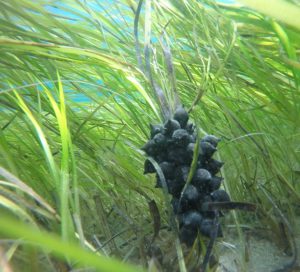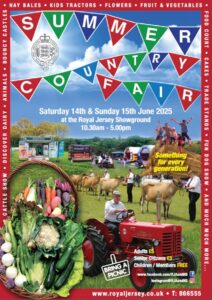
A RECOVERY of threatened habitats and of species associated with them has been observed by scientists monitoring Jersey’s recently-created marine protected areas (MPAs), where trawling and dredging have been banned.
Observations during monitoring suggest that there is recovery of seagrass and maerl in areas closed to trawling and dredging. Both habitats are recognised for their ability to sequester carbon as well as for their high value to juvenile commercial fish and shellfish species and biodiversity generally.
As two of Jersey’s blue carbon habitats, seagrass and maerl will have vital roles to play if Jersey’s Government is to achieve its commitment to become carbon neutral by 2030. It is estimated that seagrass meadows store carbon 35 times faster than tropical rainforests. Seagrasses are one of the most rapidly declining ecosystems on Earth and are losing seven per cent of their known area per year, according to the IUCN.
Seagrass looks to be recovering in Les Minquiers, which has been a designated MPA since 2017. Maerl beds have shown recovery in the South East MPA, which has been protected since 2014. Sam Blampied, the University of Plymouth PhD researcher conducting the research, said: “Signs of habitat recovery within Les Minquiers after just a few years of protection are extremely encouraging. The recovery of seagrass and maerl, bringing with them their biodiversity and carbon benefits, demonstrate the benefits that MPA creation can bring to Jersey’s waters.”
MPAs currently cover around 6.6 per cent of the Island’s territorial waters but many areas, including those containing vital blue carbon habitats, remain unprotected trawling and dredging. The research aims to build an evidence case for the creation of further MPAs, bringing benefits not just for marine life but climate change mitigation, recreation and local fisheries.
Charles Clover, executive director of Blue Marine Foundation (BLUE) said: ‘These findings show just how quickly the marine environment can recover when it is left alone and protected from harmful fishing practices like trawling and dredging which still take place in a shocking number of UK and Channel Islands marine reserves. We applaud the Jersey Government’s commitment to carbon neutrality and hope that this will translate in the near future into more marine protected areas or ideally a marine park, as floated by a senior minister a few months ago.’
Jersey’s shallow marine habitats are known to be of great value to Jersey fishermen, providing nursery grounds for valuable commercial species such as crab, lobster and scallops. Initial results from the research have shown high numbers of juvenile scallops across protected maerl beds within Les Ecrehous and the South East MPA. Edible crab larvae have also been recorded in the maerl beds.
Regular sightings of critically endangered tope, a species of shark, could indicate the MPAs are providing refuge from exploitation. Current data suggests populations of tope are decreasing. Four tope sharks were spotted on baited cameras within the MPAs during the summer. Global studies estimate over 30 times more animals live within seagrass compared to adjacent sandy habitats. Among the species recorded are cuttlefish, undulate rays and bream.
PhD student Sam Blampied, said: ‘Observations of juvenile scallops and crustaceans on the maerl beds are a sign of its importance as a nursery habitat, and the sightings of tope in the area indicate that these are healthy and productive habitats.’
Examples from other marine protected areas in the British Isles has demonstrated the benefits of closing areas to mobile fishing both for people and nature. Lyme Bay, on the South West coast of England, has proven that both marine life and the livelihoods of fishermen have flourished since mobile fishing was banned in the large MPA in 2008.
BLUE is calling for an increase in the coverage of MPAs in Jersey for the benefit of biodiversity, carbon and fishermen’s livelihoods. BLUE hopes that by using an evidence-based approach to managing Jersey’s seas and working with fishermen, benefits can be secured for marine life and those who depend on Jersey’s seas. This work is being undertaken in collaboration with the Société Jersiaise, the Government of Jersey and other stakeholders in the Island.
For more information about BLUE:
Please visit the website: www.bluemarinefoundation.com
An article by Sam Blampied is in the forthcoming ‘Autumn’ issue of RURAL magazine, due to be published by the end of September




